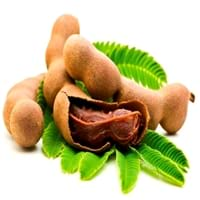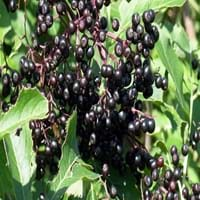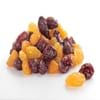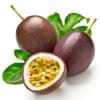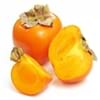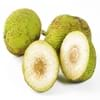Health Benefits
Boosts immune system, Boosts respiratory health, Cancer prevention, Digestive aid, Piles treatment
Cancer prevention, Heart care
General Benefits
Beneficial in improving nerve function, Protects against parasites and worms, Relieves pain
Anti oxidant properties, Anti-inflammatory properties, Boosts immune system, Controls blood sugar levels, Cures fever, Digestive aid, Eye care, Fights against infections, Flu treatment, Helps in weight loss, Maintains healthy cholesterol level
Skin Benefits
Anti-aging benefits, Brightens and lightens complexion, Exfoliates skin, Hydrates skin, Treatment of dark spots
Anti-aging benefits, Skin rejuvenation
Hair Benefits
Prevents hair loss
Promotes longer and healthier hair
Allergy Symptoms
Abdominal pains, Breathing difficulty, Dizziness, Eczema, Fainting, Hives, Itching, Nasal congestion, Swelling of face, Tingling sensation in mouth, Vomiting
Abdominal pains, Asthma, NA, Sneezing, Sore throat
Side Effects
Decrease in blood sugar levels, Induces acid reflux, Allergic reaction, Tooth decay, May form gallstones
Diarrhoea, Nausea, Vomiting
Lactating Women
No
Not Available
Best Time to Eat
Along with meal, As a snack in the late afternoon, Don't consume at night and before bed, Strictly avoid empty stomach
As a snack in the late afternoon, Don't consume at night and before bed, Eat the fresh ones, avoid mixing with any other foods, don't eat after meal., Morning time (before lunch)
Vitamin B5 (Pantothenic Acid)
Vitamin C (Ascorbic Acid)
Vitamin E (Tocopherole)
Not Available
Vitamin K (Phyllochinone)
Not Available
Lutein+Zeaxanthin
Not Available
Phytosterol
Not Available
Calories in Fresh Fruit with Peel
Not Available
Calories in Fresh Fruit without Peel
Not Available
Calories in Frozen Form
Not Available
Calories in Canned Form
Not Available
Not Available
Season
Spring, Summer
Autumn
Varieties
PKM 1, Urigam, Hasanur, Tumkur prathisthan, DTS 1 and Yogeshwari
Adams, Black Beauty, Black Lace, Johns, Nova, Variegated and York
Color
Brown, Reddish-brown
Black, Red
Inside Color
Brown
Magenta
Shape
Curving Cylinder
Round
Taste
Sour-Sweet
Juicy, Sweet
Soil Type
Loam, Sandy, Sandy loam, Well-drained
Sandy, Well-drained
Climatic Conditions
Humid to dry, Rainfall, Warm to hot climate
Warm to hot climate
Facts about
- Tamarind is used to prevent body odor.
- African children use the tamarind seeds in games.
- No cases of tamarind toxicity or allergy reported till date.
- According to a superstitious belief, the "elder tree" was supposed to ward off evil influence & give protection from witches.
- Branches from its tree are also used to make fujara, koncovka & other Slovakian flutes.
Top Producer
India
United States of America
Other Countries
Africa, Australia, Brazil, China, Mexico, Nigeria, Sudan, Taiwan
Colombia, India, Mexico
Top Importer
United States of America
Not Available
Top Exporter
Thailand
Not Available
Botanical Name
Tamarindus indica
Sambucus nigra
Synonym
Tamarindo, tamarindus
Not Available
Subkingdom
Tracheobionta
Tracheobionta
Division
Magnoliophyta
Magnoliophyta
Class
Liliopsida
Magnoliopsida
Subclass
Rosidae
Asteridae
Family
Fabaceae
Adoxaceae
Genus
Tamarindus
Sambucus
Species
Tamarindus indica
S. nigra
Generic Group
Tamarind Sub
Moschatel
Compare Tamarind and Elderberry
It is important compare Tamarind and Elderberry as both the fruits have a different nutritional value. Their comparison can be done on the basis of their vitamin and mineral content, calories, benefits as well as characteristics, making it easier for us to choose the best fruit for our diet. Their general health benefits are as follows:
Tamarind Benefits: beneficial in improving nerve function, protects against parasites and worms and relieves pain.
Elderberry Benefits: anti oxidant properties, anti-inflammatory properties, boosts immune system, controls blood sugar levels, cures fever, digestive aid, eye care, fights against infections, flu treatment, helps in weight loss and maintains healthy cholesterol level.
Fruits are also used as a remedy for various hair problems. The hair benefits of Tamarind are: prevents hair loss and hair benefits of Elderberry are: promotes longer and healthier hair. Some fruits are known to cause allergic reactions. The allergy symptoms of first fruit are: abdominal pains, breathing difficulty, dizziness, eczema, fainting, hives, itching, nasal congestion, swelling of face, tingling sensation in mouth and vomiting and the symptoms of second fruit are: abdominal pains, asthma, na, sneezing and sore throat. Get sorted Tamarind vs Elderberry comparison with the help of fruit comparison tool by fruitvs.com.
